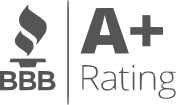Nonprofit organizations face financial challenges in nearly every economic season. Whether it’s a global crisis, a sudden drop in donations, or delayed grant reimbursements, there are moments when the mission hangs in the balance.
During the COVID-19 pandemic, many nonprofits were thrown a lifeline through large-scale federal programs like the Paycheck Protection Program (PPP) and the Employee Retention Credit (ERC) — both of which offered partial or complete loan forgiveness. For a time, it seemed the federal government had discovered a new model for keeping mission-based organizations afloat.
But now, several years later, nonprofit leaders are asking a sobering question: Are forgivable loans for nonprofits still available — or was that a one-time emergency loan measure?
The short answer: The sweeping federal forgivable loan programs created during the pandemic are gone. However, some targeted relief options, local grant–loan hybrids, and specialized financing tools continue to provide similar benefits. And with smart financial planning — including access to a nonprofit line of credit — organizations can still build the stability and flexibility they need to thrive.
Below, we’ll break down what “forgivable loans” really mean today, what programs still exist, and how nonprofit executives can build a sustainable financial strategy in 2025 and beyond.
Summary
What Exactly Is a Forgivable Loan?
A forgivable loan is a type of financing that converts to a grant if the borrower meets specific conditions. For nonprofits, this typically means using the funds for mission-aligned purposes — like retaining staff, paying essential operating expenses, or providing community services — within a certain timeframe.
In other words, if your organization follows the program’s rules, you don’t have to pay the money back.
Forgivable loans differ from grants in that they start as a loan (usually with simple documentation and clear performance criteria), but they share the same end goal: helping nonprofits maintain impact during financial strain without adding long-term debt.
The Pandemic Era: A Quick Look Back
From 2020 through 2022, the federal government distributed billions of dollars in relief through programs such as:
Paycheck Protection Program (PPP): Offered forgivable loans of up to $10 million for payroll and essential expenses.
Economic Injury Disaster Loan (EIDL) Advance: Provided a grant-like advance of up to $10,000, which did not have to be repaid.
Employee Retention Credit (ERC): Functioned as a refundable payroll tax credit rather than a traditional loan.
These programs were temporary, and as of 2025:
The PPP officially ended in 2021.
The EIDL program is closed for new COVID-related applications.
The ERC covered wages only through 2021 and is no longer available.
While these initiatives provided crucial support, their expiration has left many nonprofits searching for new forms of flexible, low-cost capital.
Are Forgivable Loans Still Available in 2025?
Large-scale federal forgivable loans like the PPP no longer exist. However, there are still situational, regional, and philanthropic forgivable loan programs that nonprofits can pursue — especially those addressing local economic recovery, disaster response, or community development.
Let’s explore the most relevant sources today.
1. SBA Disaster Assistance (Limited Availability)
The U.S. Small Business Administration (SBA) continues to administer disaster loans when specific regions are declared disaster areas — for example, after hurricanes, floods, wildfires, or other emergencies.
While these loans are not generally forgivable, in certain cases, the EIDL Advance (a grant portion that does not need to be repaid) may be reintroduced or localized for new disasters. Nonprofits can monitor current declarations and assistance programs at sba.gov/disaster.
Key points:
Not ongoing — depends on a declared disaster area.
Forgivable only if an “advance” or “grant” component is offered.
Low-interest terms (2.75% for nonprofits) and long repayment periods.
If your nonprofit operates in a disaster-prone region, it’s worth signing up for SBA alerts and establishing relationships with local emergency management offices.
2. Community Development Financial Institutions (CDFIs)
CDFIs are specialized lenders that prioritize mission-based organizations and underserved communities. Many CDFIs offer flexible or partially forgivable loans, especially for nonprofits addressing affordable housing, community health, or workforce development.
Some CDFIs provide “recoverable grants” — essentially forgivable loans contingent on program outcomes. If your nonprofit meets specific benchmarks (such as serving a targeted population or maintaining certain staffing levels), the loan balance is canceled.
CDFIs worth exploring include:
Nonprofit Finance Fund (NFF)
Local Initiatives Support Corporation (LISC)
Capital Impact Partners
Community Reinvestment Fund (CRF USA)
These organizations often collaborate with foundations and state governments to deploy hybrid capital — part loan, part grant — designed to stabilize community-based nonprofits.
3. Local and State Economic Development Programs
Many state and municipal agencies now offer their own small-business or nonprofit recovery funds, which may include forgivable components. These programs are less publicized than federal initiatives but can be valuable lifelines.
Examples include:
State economic recovery funds that issue “performance-based loans” — forgiven when job creation or community service goals are met.
City revitalization funds that provide zero-interest loans to nonprofits operating in distressed neighborhoods.
Arts and culture recovery programs administered by state humanities or arts councils.
Nonprofits should check with their state economic development office, community foundation, or local chamber of commerce for current offerings.
4. Philanthropic “Forgivable Capital”
Some private foundations and large philanthropic institutions have begun experimenting with forgivable or recoverable loans as part of their impact investment portfolios. These funds bridge the gap between grants and traditional debt.
Under this model, a foundation provides capital upfront with the expectation that repayment will occur only if the nonprofit exceeds certain financial thresholds. If those thresholds are not met — for example, because the nonprofit operates at a loss while fulfilling its mission — the loan is forgiven.
Examples of philanthropic lenders experimenting with this approach include:
Ford Foundation’s Mission Investments Program
MacArthur Foundation’s Catalytic Capital Consortium
The Rockefeller Foundation’s Zero Gap Fund
To explore this route, nonprofits typically need to have measurable social impact outcomes and strong governance. Partnerships often arise through foundation relationships or intermediary organizations that manage impact investments.
5. Federal and State Grants (Forgivable by Design)
Though technically not “loans,” certain grant programs function as forgivable loans because they require performance compliance rather than repayment. For example:
HUD Community Development Block Grants (CDBG) can flow to nonprofits through local governments, often structured as deferred or forgivable loans tied to housing or infrastructure work.
USDA Rural Development programs sometimes include loan-forgiveness provisions for nonprofits providing rural utilities or broadband access.
Energy and sustainability grants from the Department of Energy or state agencies occasionally use loan formats with conditional forgiveness based on measurable energy savings.
If your nonprofit works in community development, housing, energy, or food access, these programs can serve as a form of forgivable capital.
What If Forgivable Loans Aren’t Available?
Even though forgivable loans have become rare, nonprofits can still build resilience through strategic access to working capital. The key is flexibility — having immediate, affordable financing available when timing gaps occur.
A nonprofit line of credit is often the most practical and sustainable option for organizations that:
Experience uneven cash flow due to grant reimbursements or donor cycles.
Need to cover short-term expenses (like payroll or rent) while awaiting pledged funds.
Want to avoid costly, long-term debt.
Financing Solutions: A Reliable Option for Nonprofits
Since 2012, Financing Solutions has become one of the nation’s leading providers of lines of credit for nonprofits. Our product was built for organizations that want quick, responsible access to cash without jumping through complex lending hoops.
Key benefits include:
No cost to set up. You pay nothing unless you draw funds.
No personal guarantees (except in fraud cases).
Fast approval — a simple, two-minute online application.
No collateral or hidden fees.
Peace of mind knowing your nonprofit can keep programs running smoothly during funding delays.
A nonprofit line of credit isn’t forgivable, but it provides the next best thing — reliable, affordable liquidity that prevents crises before they happen.
To see if your organization qualifies, you can complete a no-obligation application in just minutes.
How Nonprofits Can Stay Prepared for Future Forgivable Programs
If the pandemic taught nonprofit leaders anything, it’s the importance of staying ready. When relief programs open, funding often runs out fast. Here’s how to position your organization for the next opportunity:
Maintain up-to-date financials. Be ready to produce 990s, payroll records, and revenue statements quickly.
Keep banking relationships active. Many PPP loans were processed first through existing lenders.
Build creditworthiness now. A line of credit or small loan helps establish credibility for future financing.
Join nonprofit financial networks. Groups like the National Council of Nonprofits and Nonprofit Finance Fund share updates on available capital programs.
Track legislative developments. Economic downturns or national emergencies often spark new funding mechanisms.
By preparing your organization now, you’ll be ready to act swiftly when the next round of forgivable or hybrid capital becomes available.
The Bottom Line: Forgivable Loans Are Rare, But Opportunity Remains
Forgivable loans for nonprofits haven’t disappeared entirely — they’ve just evolved. Instead of sweeping federal programs, today’s opportunities are smaller, more localized, and often tied to specific missions or outcomes.
For most nonprofits, the path forward involves combining grants, local relief funds, and flexible financing tools like a line of credit to manage day-to-day cash flow.
While no one can predict the next national crisis or funding boom, organizations that build financial resilience — through smart partnerships, sound credit, and strong planning — will always be in the best position to continue their mission no matter what comes next.




